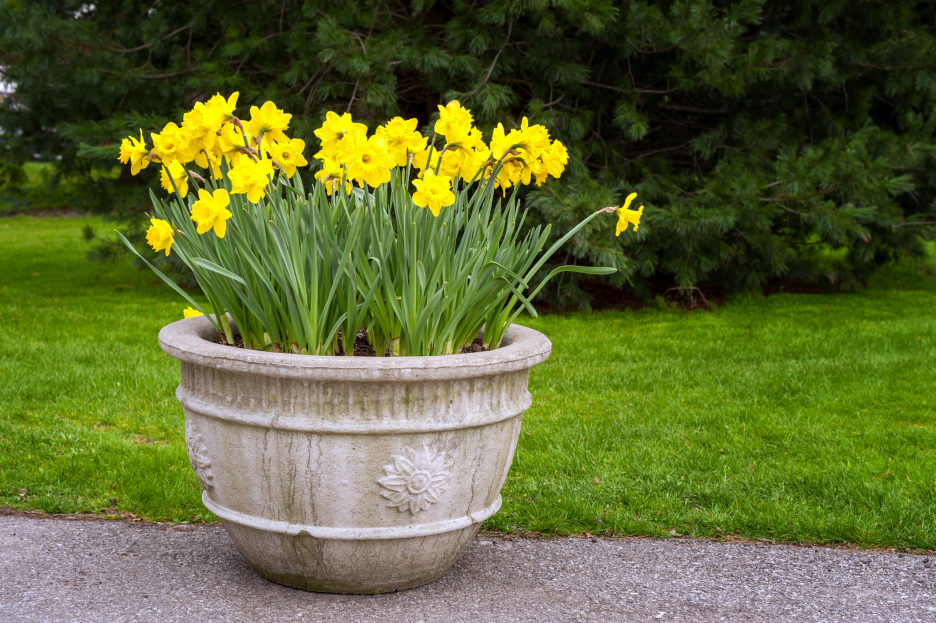
Daffodils (Narcissus spp.) are one of the most beloved springtime flowers, known for their cheerful, trumpet-shaped blooms in bright yellow, white, and orange hues. While they are commonly grown outdoors, daffodils can also thrive as houseplants, bringing a splash of color and fragrance to your indoor space. With their easy-to-care-for nature, they are perfect for both beginner and experienced plant enthusiasts. Here’s how to care for your daffodil houseplant to ensure it blooms beautifully and lasts for years.
Daffodils require bright, indirect light to grow well indoors. Place your daffodil plant near a sunny window where it can receive several hours of natural light each day. However, avoid placing the plant in direct sunlight for extended periods, as this can scorch the delicate flowers and leaves. A location with morning sunlight and afternoon shade is ideal for growing daffodils indoors. The more light they receive, the better their chances of blooming.
Daffodils prefer moderate moisture and should be watered when the top inch of soil feels dry to the touch. Water your plant thoroughly, ensuring the excess water drains out of the pot. Be careful not to overwater, as daffodils do not like to sit in soggy soil. Good drainage is essential to prevent root rot. During the blooming period, water regularly, but once the flowers start to fade, reduce watering and allow the soil to dry out slightly. After the plant has finished blooming, you can cut back on watering until the next growing season.
Daffodils generally do well in average indoor humidity levels. They do not require high humidity, but they will appreciate occasional misting if your home is particularly dry. However, avoid misting the flowers directly, as this can cause them to wilt prematurely. If the air in your home is very dry, placing the daffodil pot on a humidity tray or grouping it with other plants can help maintain a comfortable moisture level in the air.
Daffodils prefer well-draining, fertile soil. A good-quality potting mix combined with some perlite or sand for added drainage is ideal. The soil should be light and airy, allowing the bulbs to establish healthy roots while preventing water from accumulating at the bottom of the pot. Choose a pot with drainage holes to ensure the soil doesn’t become waterlogged. Daffodils prefer a slightly acidic to neutral pH, which is suitable for most standard potting mixes.
Daffodils grow best in cool to moderate temperatures. The ideal temperature range for daffodils is 50-65°F (10-18°C). If you can provide them with a cooler environment, it will encourage better blooming. Avoid placing the plant in areas with high heat, such as near radiators, heating vents, or other heat sources. A cool room with consistent temperatures is best for daffodils to thrive and bloom at their best.
Daffodils are not heavy feeders, but they can benefit from occasional feeding during the growing season. Use a balanced, water-soluble fertilizer once every 4-6 weeks while the plant is actively growing and blooming. A fertilizer with a higher phosphorus content can help promote better flowering. After blooming, reduce or stop fertilizing, as the plant will be entering its dormant phase. Over-fertilizing can lead to excessive leaf growth at the expense of flowers.
Once your daffodils have finished blooming, you can remove the spent flowers to prevent the plant from putting energy into seed production. However, it’s important to leave the leaves intact until they begin to yellow and die back naturally. The leaves help the bulb store energy for the next growing season. Cutting the leaves too early can reduce the plant's ability to bloom again in the future. Allow the foliage to die back naturally, and once it has completely withered, you can trim it back.
Daffodils are typically grown from bulbs and do not require frequent repotting. If you’re growing them indoors, you can repot the bulbs into fresh soil after blooming. However, many people treat daffodils as annuals, discarding the bulbs after they have finished blooming and planting new ones each year. If you decide to keep the bulbs, allow them to rest in a cool, dry place for several months before replanting them in fresh soil for the next growing season.
Daffodils are toxic to pets, particularly to cats and dogs. The bulbs, in particular, contain compounds called lycorine and other alkaloids, which can cause symptoms such as vomiting, diarrhea, and drooling if ingested. If you have pets in your home, it’s essential to keep daffodils out of their reach to prevent accidental ingestion. If you suspect your pet has ingested any part of a daffodil, contact your veterinarian immediately.